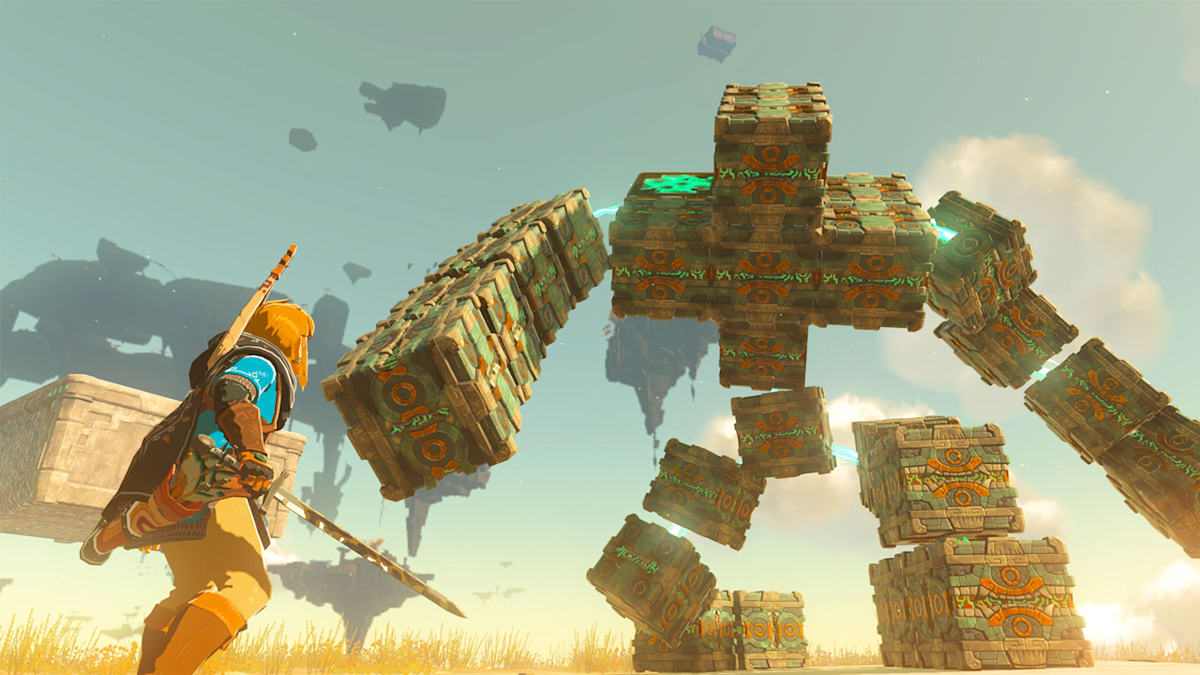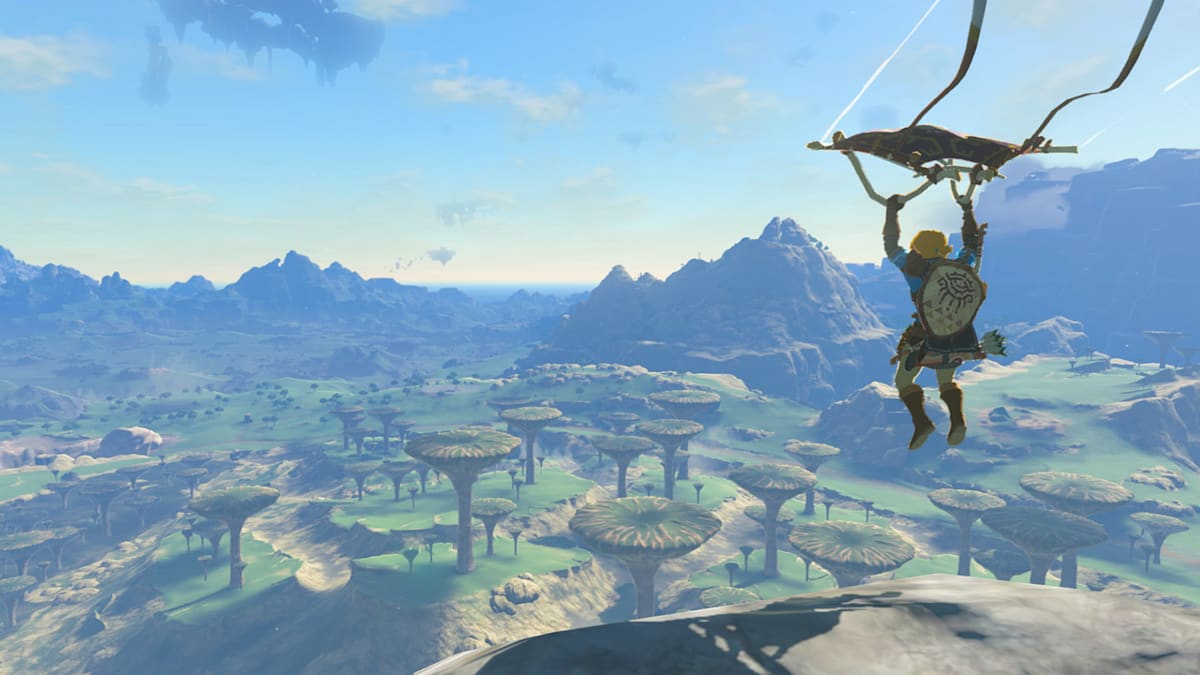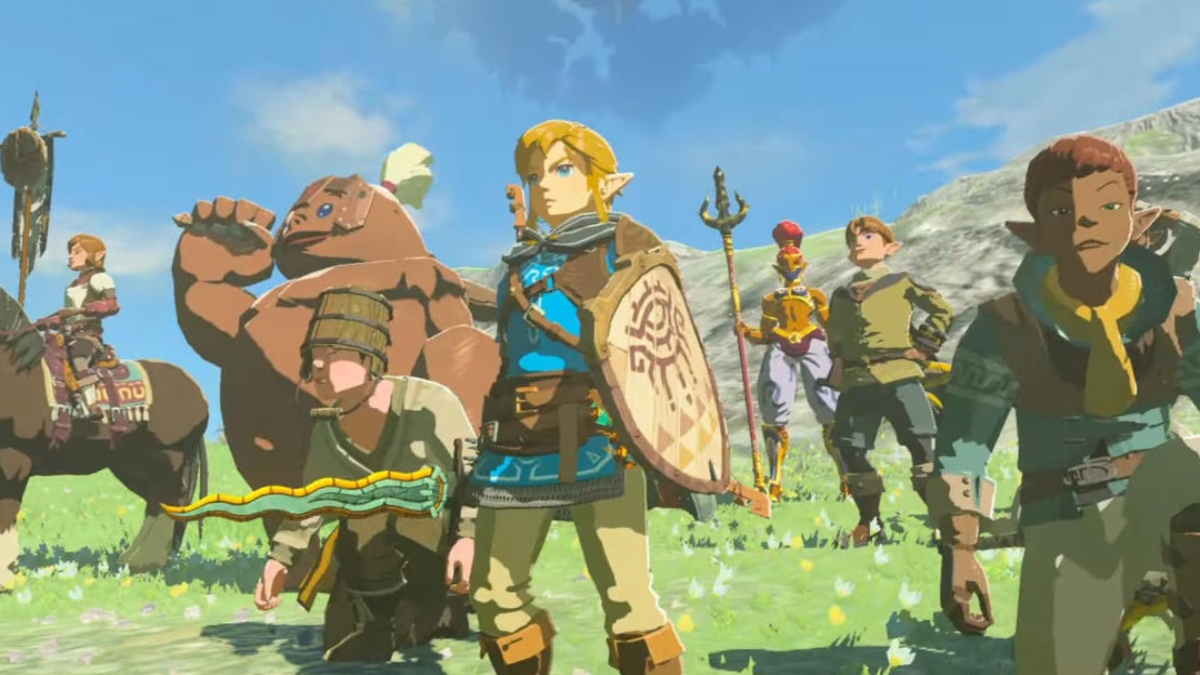The Legend of Zelda: Tears of the Kingdom is finally here, arriving to universal critical praise and a monster wave of hype. Players all around the world are now exploring the vast open world of Hyrule, which is as brimming with content as we’d expect from a Breath of the Wild sequel.
There’s only one fly in the ointment. The Nintendo Switch is now six years old and even on its original release was an underpowered system. Back in 2017 it was less powerful than the PlayStation 4 and Xbox One and is now leagues behind what the PlayStation 5 and Xbox Series S|X can do. For years fans have grumbled that Nintendo has refused to update the guts of their hardware and current indications are we won’t see a Switch 2 until late 2024 at the earliest.
So, how does the ambitious open world of Tears of the Kingdom run on Switch?
The good news

Breath of the Wild aimed for 30 FPS and a 900p resolution target in docked and 720p in handheld mode. Dynamic resolution scaling was present, though by and large the 2017 release hit its targets and didn’t need to drop the resolution too often. Some areas, notably heavily forested regions and busy villages, saw heavy frame-rate drops, though later patches improved the game’s performance.
Tears of the Kingdom runs on an evolution of the Breath of the Wild engine and aims for the same target resolutions and frame rates. After spending so much time developing for the Switch, Nintendo has an excellent grasp of how to optimize games for the system, though the infamously rough release of Pokémon Scarlet & Violet raised fears that Tears of the Kingdom may push the system too far.
After combing through gameplay footage, and as verified by the folks at Digital Foundry, if you can handle the performance of Breath of the Wild you’ll be happy with Tears of the Kingdom. The vast majority of the game sticks to 30 FPS, even when looking out over the vast open world while flying or transitioning between environments.
The game’s painterly aesthetic also helps smooth over what are now arguably dated graphics, with the design of environments and enemies leaning towards caricature and thankfully not even attempting photorealism. All that was to Breath of the Wild‘s benefit and all still applies to Tears of the Kingdom.
The bad news

Tears of the Kingdom‘s technical outlook is surprisingly sunny, though there are a couple of common elements that will see frame rates taking a hit. Using Link’s new powers seems to cause a frame rate dip, as does setting off large explosions. Combine powers with explosions and large groups of enemies and you’ll see frame rates dip down into the twenties, likely a result of the game frantically generating alpha effects and doing multiple physics calculations. But, thankfully, these are brief dips of a few seconds or less and don’t seriously impact gameplay.
As with Breath of the Wild, there are also specific areas that seem to push the Switch to its limits, leading to more frame rate dips. Expect the fans to heat up in particularly populated zones in docked and handheld mode, meaning battery consumption when playing in handheld mode is likely to be quite high. We haven’t timed it ourselves, but in handheld mode Breath of the Wild drained the Switch dry in about three hours and we expect Tears of the Kingdom to do the same or slightly worse (and, of course, this will vary again depending on the age of your system).
None of the above is ideal, though we’re prepared to give Tears of the Kingdom some leeway for having to run on such dated hardware. In addition, as with Breath of the Wild, we expect patches to arrive over the next few months that will improve some of the more obvious performance issues in busy areas.
Conclusion

All in all, Tears of the Kingdom is very far from a Pokémon Scarlet & Violet level catastrophe.
It’s worth remembering that Breath of the Wild was developed and released as a Wii U game, meaning the technical backbone of Tears of the Kingdom is designed for a less powerful console than the Switch. This seems to have given Nintendo enough wiggle room to expand gameplay possibilities and physics interactions without a major performance hit, though it must be said that in terms of graphics there’s no obvious improvement on what Breath of the Wild achieved all those years ago.
In this case, we’re happy that Nintendo seems to have carefully considered performance and, while those used to 4K60 on Sony and Microsoft’s current-gen hardware might find Tears of the Kingdom something of a throwback experience, the core game is more than good enough to make the experience worthwhile.
That said, we can’t deny that part of us is hoping for a backwards-compatible Switch 2 in the coming years that’ll be able to run this and other Switch games at a higher resolution and frame rate. If you can stomach the wait and feel like betting Nintendo will embrace backwards compatibility in their next console maybe that will eventually be the best way to play Tears of the Kingdom but, as it stands, this game runs well enough and looks good enough to enjoy right now.
We suspect Tears of the Kingdom will go down as a high-water mark for the Switch’s graphical and gameplay output, as there are few games on the horizon coming to the system with this level of ambition. Perhaps the next major test will be the upcoming port of Hogwarts Legacy on July 25, but if that game runs on Switch anything like it does on Sony and Microsoft’s current-gen consoles it’ll be wizardry way beyond anything actually in the game.
But that’s an analysis for another day. Tears of the Kingdom is here, it’s wonderful, and will be all that anyone’s talking about for some time. Hats off to Nintendo, they’ve done it again.

